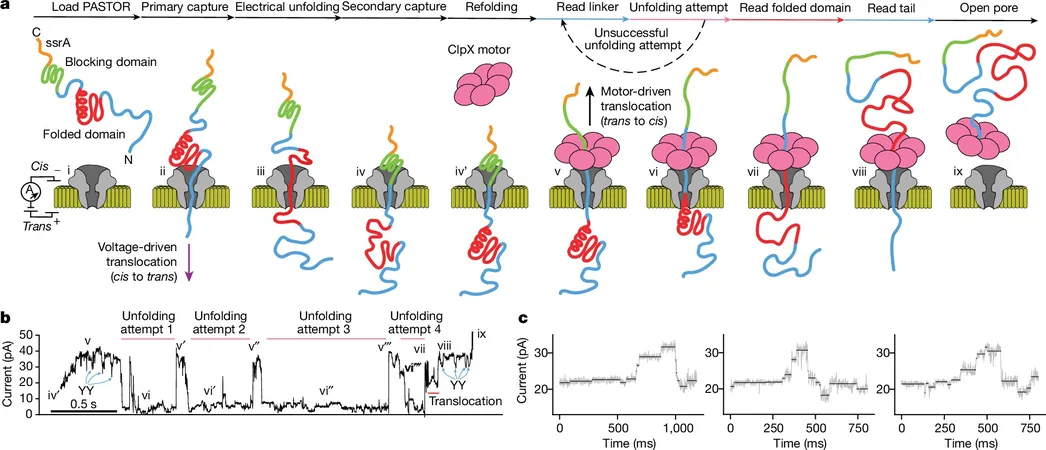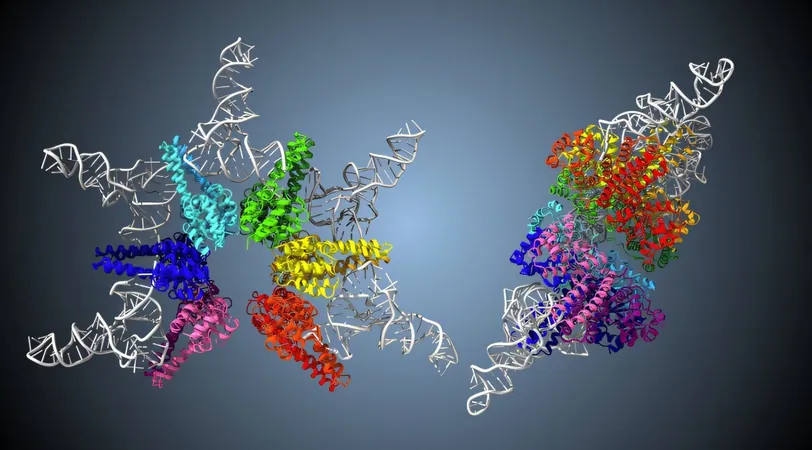
Breakthrough in Protein Sequencing: Biologists Use Nanopores to Unlock the Mysteries of Proteoforms
2024-09-26
Author: Nur
Study Overview
In a groundbreaking study published in the prestigious journal *Nature*, a collaborative team of chemical biologists from the University of Washington and Oxford Nanopore Technologies has unveiled an innovative technique for sequencing proteins. This method harnesses the power of nanopores embedded in lipid membranes, representing a significant leap in the field of proteomics.
Understanding Proteoforms
The human genome comprises about 20,000 genes, but it gives rise to over a million different protein structures, known as proteoforms, which account for the vast biological diversity among individuals. While the human genome has been successfully sequenced, the intricacies of proteoforms have previously eluded researchers, primarily due to their complex three-dimensional structures.
Methodology
The research team tackled this challenge by developing a method to pull proteins through nanopores, a process that allows for the measurement of structural variations using an electric field. Building on previous advancements, including a notable study led by Hagan Bayley, a co-founder of Oxford Nanopore, the researchers demonstrated that nanopores can function as powerful tools for protein sequencing.
Innovative Process
The innovative process begins with the unfolding of the target protein, achieved by attaching negatively charged sequences to one end of the protein. An electric current is then used to exert force on the protein, stretching it to its full length. The protein is subsequently pulled through a naturally occurring nanopore within a lipid channel.
Enhancing Accuracy
To enhance the sequencing accuracy, the researchers incorporated a 'stopper' that regulates the speed at which the protein moves through the nanopore. This stopper not only prevents the protein from passing through too quickly but also assists in further straightening the protein, facilitating more precise measurements.
Electric Signal Analysis
As the protein traverses the nanopore, an electric charge is generated just past the stopper and directed through the protein itself. By analyzing changes in the electric signal, the researchers can meticulously determine the sequence of amino acids as the protein passes through the nanopore, effectively achieving complete protein sequencing.
Future Challenges
However, the team acknowledges that the method is still in the refinement stage before it can be widely adopted. Challenges such as the electric field occasionally losing its grip on the protein need to be addressed. Additionally, the team aims to eliminate the necessity of adding the charged tail to the protein, which would simplify the procedure and enhance its accessibility.
Potential Impact
This revolutionary technique holds tremendous promise for the future of protein research, potentially leading to new discoveries in medicine, biotechnology, and understanding diseases at a molecular level.
Conclusion
Stay tuned as we eagerly anticipate further developments from this innovative team, as they're not just unraveling proteins but perhaps the next frontier of biological science!


 Brasil (PT)
Brasil (PT)
 Canada (EN)
Canada (EN)
 Chile (ES)
Chile (ES)
 Česko (CS)
Česko (CS)
 대한민국 (KO)
대한민국 (KO)
 España (ES)
España (ES)
 France (FR)
France (FR)
 Hong Kong (EN)
Hong Kong (EN)
 Italia (IT)
Italia (IT)
 日本 (JA)
日本 (JA)
 Magyarország (HU)
Magyarország (HU)
 Norge (NO)
Norge (NO)
 Polska (PL)
Polska (PL)
 Schweiz (DE)
Schweiz (DE)
 Singapore (EN)
Singapore (EN)
 Sverige (SV)
Sverige (SV)
 Suomi (FI)
Suomi (FI)
 Türkiye (TR)
Türkiye (TR)
 الإمارات العربية المتحدة (AR)
الإمارات العربية المتحدة (AR)